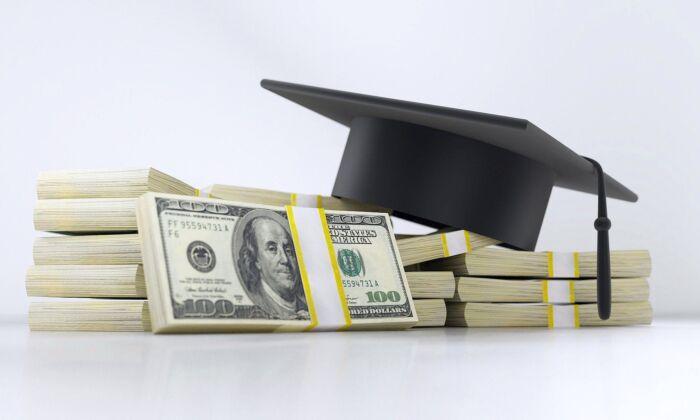You guys, we all know 2020 was insane. But here’s some good news: You may not need to make student loan payments until October of this year because the student loan relief that came from the CARES Act has been extended through Sept. 30, 2021. Let’s talk about what this actually means so you know what’s happening, and so you can get that student loan debt out of your life for good.
What Did the CARES Act Do?
The CARES Act (or Coronavirus Aid, Relief, and Economic Security Act) was a stimulus bill passed by Congress in the early days of the COVID-19 pandemic to help the economy (and a lot of Americans) get back up and running. The CARES Act offered temporary payment suspension, a zero percent interest rate on student loans, and a hold on all collections and wage garnishments—or money taken out of the borrower’s paycheck to repay the loan—on defaulted loans.Once it expired, then-President Donald Trump extended student loan relief until Jan. 31, 2021. But now that President Joe Biden is in office, he’s extended it again until Sept. 30, 2021. So, what does that mean for you and your loans?
What Will the Student Loan Payment Relief Extension Do?
First, let’s clear something up: This isn’t the same thing as a student loan forgiveness plan. You’ll still have to pay the full amount of your student loans eventually unless some other policy or relief package is put into place.The basic idea of this extension is that student loan interest rates will stay at zero percent, and payments on all federally owned student loans will be paused through the end of September. These types of loans are included:
- Direct Subsidized Loans
- Direct Unsubsidized Loans
- Direct PLUS Loans
- Direct Consolidation Loans
- Federal Perkins Loans (if they’re not owned by the college you went to)
- Federal Family Education (FFEL) Program Loans (if they’re not commercially owned)
How the Extension Affects Different Loan Situations
If your loan situation’s different than the typical repayment process for federal student loans, let’s break down how this extension could impact you. Here are some potential scenarios:- Default: If your loans were in default (aka you didn’t make payments on time) before COVID, this extension will give you the chance to get caught up. You can do your best to make those late payments without having to make any new ones!
- Public Service Loan Forgiveness: If you’re in the process of qualifying for this type of loan forgiveness and you’re still able to work and make payments, know that any payments you make during this time will still count toward your 120 payments needed. Take advantage of the zero percent interest rate and keep paying off your loans.
- Private Student Loans: If you took out private student loans, this extension doesn’t apply to you since your loans didn’t come from the federal government. But it’s still worth talking to your lender and asking for an extension or some other kind of plan if your finances have taken a hit.
What You Can Do to Pay Off Your Loans
Remember, the extension isn’t going to get rid of your debt. It’s just going to drag out your repayment period and (hopefully) help you out if you’re struggling financially. Times are tough, but if you can get a solid plan of action in place, you’ll be able to get rid of those student loans faster than you might think.Here are some practical steps you can take to pay off your loans based on your current financial situation:
- If your income is stable, keep crushing your monthly student loan payments. Pay more than the minimum payment if you can! Or, if you’re using the debt snowball to pay off your debts from smallest to largest and you have smaller debts to knock out before your student loan, then you could use the money you would’ve been using for your loans to get rid your smaller debts faster during this time. Whatever you do, keep your debt-attacking mindset!
- If you have an at-risk income, save up a $1,000 emergency fund ASAP and keep making the minimum payments on all your debts. If you’re in a really tight spot, pause your student loan payments during the extension period and save any extra money you have until you’re able to get a more solid income.
- If you’ve lost income, try to stay calm, pause your debt snowball, and make it your top priority to cover the Four Walls (food, utilities, shelter, and transportation). Pick up whatever side jobs are available, sell what you can, and save any leftover money until you get back on your feet.
- If you have more than one student loan, you might want to think about consolidating and refinancing them—but only if it won’t cost you anything to refinance, you can get a lower, fixed interest rate, and you don’t get a longer repayment period. That way you’ll have more money available to keep tackling your debt.
Anthony ONeal is a financial expert, host of the popular online series “The Table” on his YouTube channel, and a best-selling author. Follow Anthony at AnthonyONeal.com and on Twitter @AnthonyONeal.




